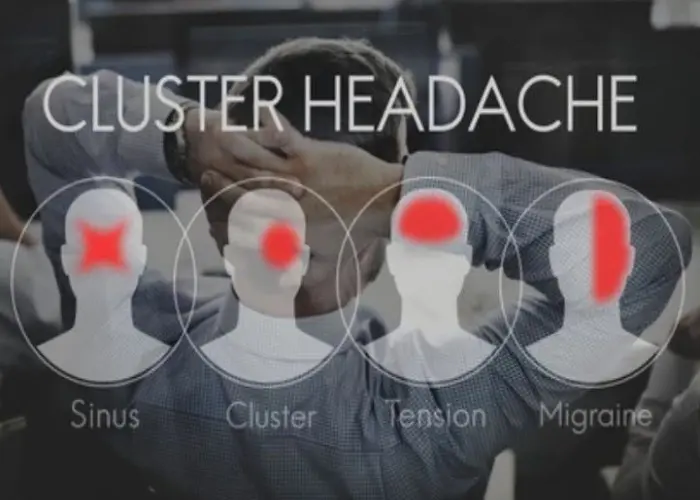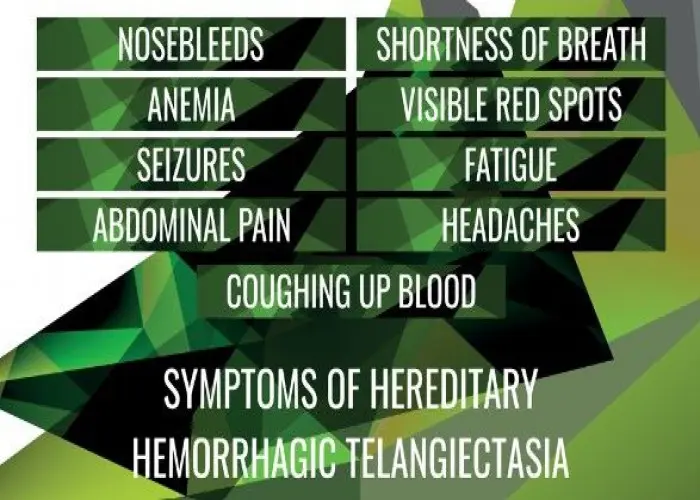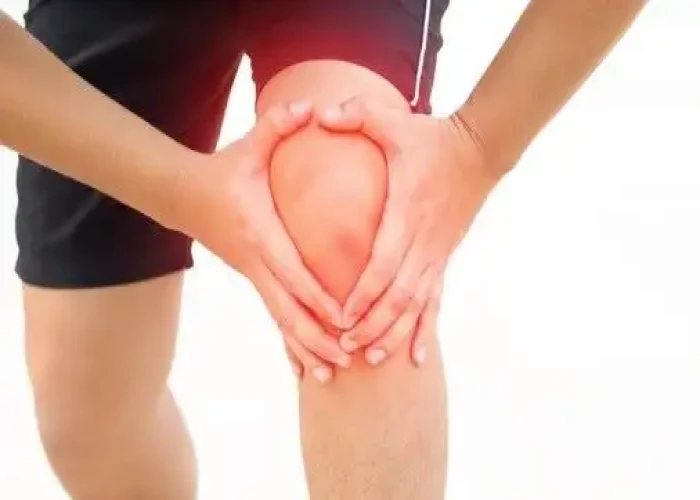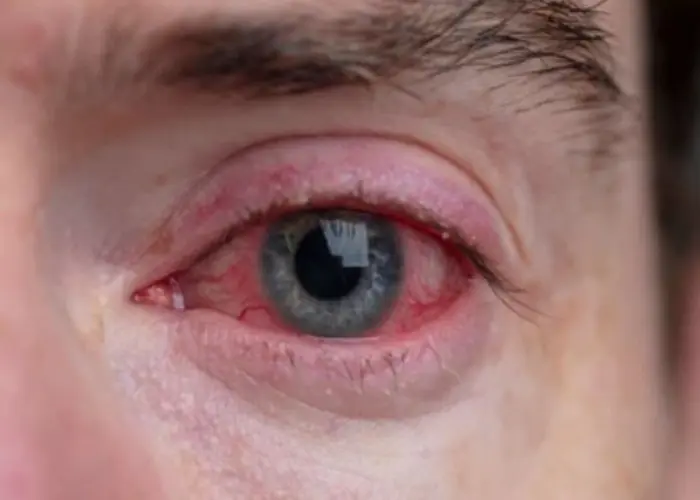 Welcome
Welcome
“May all be happy, may all be healed, may all be at peace and may no one ever suffer."
Cluster headache

Cluster headache is a severe and recurring type of headache that typically occurs on one side of the head and is characterized by intense pain that is often described as a burning or piercing sensation. The condition is relatively rare, affecting about 1 in 1000 people, and it is more common in men than women.
Cluster headaches typically occur in cycles, with periods of frequent attacks lasting for several weeks or months, followed by periods of remission lasting for months or even years. The pain associated with cluster headaches often occurs around the eye or temple and may be accompanied by other symptoms, such as redness and tearing of the eye, nasal congestion, and restlessness.
The exact cause of cluster headaches is not well understood, but it is believed to be related to abnormalities in the hypothalamus, a region of the brain that controls the body's internal clock and circadian rhythms. Certain triggers, such as alcohol consumption, smoking, and changes in sleep patterns, may also play a role in triggering cluster headaches.
Treatment for cluster headaches typically involves a combination of medications and lifestyle modifications. Acute attacks may be managed with medications, such as triptans, oxygen therapy, or nerve blocks, while preventive medications, such as verapamil, lithium, or corticosteroids, may be used to reduce the frequency and severity of attacks.
In some cases, surgical procedures, such as deep brain stimulation, may be considered for severe or refractory cases of cluster headaches. Lifestyle modifications, such as avoiding triggers, maintaining regular sleep patterns, and quitting smoking, may also help reduce the frequency and severity of attacks.
While cluster headaches can be a chronic and debilitating condition, early diagnosis and appropriate treatment can help manage symptoms and improve the quality of life for affected individuals.
Research Papers
Disease Signs and Symptoms
- Anxiety, agitation or restlessness
- Swelling around your eye on the affected side
- Drooping eyelid or pupil narrowing
- Swollen eye (Conjunctivitis)
- Pale skin color (pallor)
- Sweat on forehead
- Runny nose
- Eye redness
- Watery eyes
- Headaches
Disease Causes
Cluster headache
The exact cause of cluster headaches is unknown, but cluster headache patterns suggest that abnormalities in the body's biological clock (hypothalamus) play a role.
Unlike migraine and tension headache, cluster headache generally isn't associated with triggers, such as foods, hormonal changes or stress.
Once a cluster period begins, however, drinking alcohol may quickly trigger a splitting headache. For this reason, many people with cluster headache avoid alcohol during a cluster period.
Other possible triggers include the use of medications such as nitroglycerin, a drug used to treat heart disease.
Disease Prevents
Disease Treatments
There's no cure for cluster headaches. The goal of treatment is to decrease the severity of pain, shorten the headache period and prevent the attacks.
Because the pain of a cluster headache comes on suddenly and might subside within a short time, cluster headache can be difficult to evaluate and treat, as it requires fast-acting medications.
Some types of acute medication can provide some pain relief quickly. The therapies listed below have proved to be most effective for acute and preventive treatment of cluster headache.
Acute treatments
Fast-acting treatments available from your doctor include:
- Oxygen. Briefly inhaling pure oxygen through a mask provides dramatic relief for most who use it. The effects of this safe, inexpensive procedure can be felt within 15 minutes.
- Oxygen is generally safe and without side effects. The major drawback of oxygen is the need to carry an oxygen cylinder and regulator with you, which can make the treatment inconvenient and inaccessible at times. Small, portable units are available, but some people still find them impractical.
- Triptans. The injectable form of sumatriptan (Imitrex), which is commonly used to treat migraine, is also an effective treatment for acute cluster headache.
- The first injection may be given while under medical observation. Some people may benefit from using sumatriptan in nasal spray form, but for most people this isn't as effective as an injection and it may take longer to work. Sumatriptan isn't recommended if you have uncontrolled high blood pressure or heart disease.
- Another triptan medication, zolmitriptan (Zomig), can be taken in nasal spray form for relief of cluster headache. This medication may be an option if you can't tolerate other forms of fast-acting treatments.
- Oral medications are relatively slow to act and are often not useful for acute treatment of cluster headaches.
- Octreotide. Octreotide (Sandostatin), an injectable synthetic version of the brain hormone somatostatin, is an effective treatment for cluster headache for some people. But overall, it's less effective and acts less quickly to relieve pain than triptans.
- Local anesthetics. The numbing effect of local anesthetics, such as lidocaine, may be effective against cluster headache pain in some people when given through the nose (intranasal).
- Dihydroergotamine. The injectable form of dihydroergotamine (D.H.E. 45) may be an effective pain reliever for some people with cluster headache. This medication is also available in an inhaled (intranasal) form, but this form hasn't been proved to be effective for cluster headache.
Preventive treatments
Preventive therapy starts at the onset of the cluster episode with the goal of suppressing attacks.
Determining which medicine to use often depends on the length and regularity of your episodes. Under the guidance of your doctor, you can taper off the drugs once the expected length of the cluster episode ends.
- Calcium channel blockers. The calcium channel blocking agent verapamil (Calan SR, Verelan) is often the first choice for preventing cluster headache. Verapamil may be used with other medications. Occasionally, longer term use is needed to manage chronic cluster headache.
- Side effects may include constipation, nausea, fatigue, swelling of the ankles and low blood pressure.
- Corticosteroids. Inflammation-suppressing drugs called corticosteroids, such as prednisone (Prednisone Intensol, Rayos), are fast-acting preventive medications that may be effective for many people with cluster headaches.
- Your doctor may prescribe corticosteroids if your cluster headache condition has started recently or if you have a pattern of brief cluster periods and long remissions.
- Although corticosteroids might be a good option to use for several days, serious side effects such as diabetes, hypertension and cataracts make them inappropriate for long-term use.
- Lithium carbonate. Lithium carbonate (Lithobid), which is used to treat bipolar disorder, may be effective in preventing chronic cluster headache if other medications haven't prevented cluster headaches.
- Side effects include tremor, increased thirst and diarrhea. Your doctor can adjust the dosage to minimize side effects.
- While you're taking this medication, your blood will be checked regularly for the development of more-serious side effects, such as kidney damage.
- Noninvasive vagus nerve stimulation (VNS). VNS uses a hand-held controller to deliver electrical stimulation to the vagus nerve through the skin. Although more research is needed, some studies found that VNS helped reduce the frequency of cluster headaches.
- Nerve block. Injecting a numbing agent (anesthetic) and corticosteroid into the area around the occipital nerve, situated at the back of your head, might improve chronic cluster headaches.
- An occipital nerve block may be useful for temporary relief until long-term preventive medications take effect. It's often used in combination with verapamil.
Other preventive medications used for cluster headache include anti-seizure medications, such as topiramate (Topamax, Qudexy XR).
Surgery
Rarely, doctors may recommend surgery for people with chronic cluster headaches who don't find relief with aggressive treatment or who can't tolerate the medications or their side effects.
Sphenopalatine ganglion stimulation involves surgery to implant a neurostimulator that's operated by a hand-held controller. Some research showed quick pain relief and a lower frequency of headaches, but more studies are needed.
Several small studies found that occipital nerve stimulation on one or both sides may be beneficial. This involves implanting an electrode next to one or both occipital nerves.
Some surgical procedures for cluster headache attempt to damage the nerve pathways thought to be responsible for pain, most commonly the trigeminal nerve that serves the area behind and around your eye.
However, the long-term benefits of destructive procedures are disputed. Also, because of the possible complications — including muscle weakness in your jaw or sensory loss in certain areas of your face and head — it's rarely considered.
Disease Diagnoses
Disease Allopathic Generics
-
Paracetamol
A popular common treatment for headaches is a medication with paracetamol or aspirin.
First 2 and then 1 3 times a day.
-
Vitamin B complex
To eliminate weakness. 1 pill 2 times a day after meals.
-
Naproxen Sodium
Naproxen is a medicine that can be used to bite into the head for scalp pain.
Young age 250mg or adults 500mg 2 times a day after meals for 5/7 days.
-
Ranitidine Hydrochloride
Medicines containing ranitidine for stomach gas. 1 pill 2 times a day after meals.
Disease Ayurvedic Generics
Disease Homeopathic Generics
Disease yoga
Cluster headache and Learn More about Diseases

Hereditary hemorrhagic telangiectasia

Paget's disease of bone

Pulmonary valve disease

Cystic fibrosis

Adnexal tumors

Swollen knee

Adrenoleukodystrophy

Blepharitis
Cluster headache, Cluster headache treatment, ক্লাস্টার মাথাব্যথা
To be happy, beautiful, healthy, wealthy, hale and long-lived stay with DM3S.
